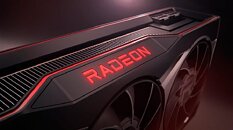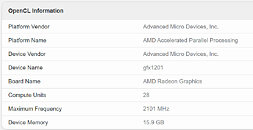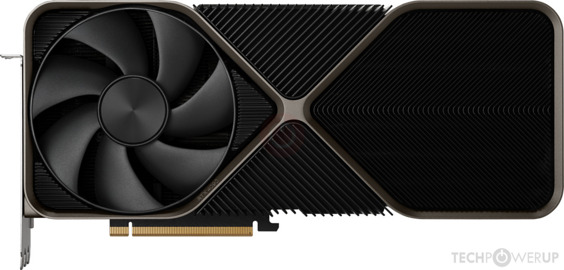- Joined
- May 21, 2024
- Messages
- 735 (3.42/day)
AMD's upcoming Radeon RX 8000 "RDNA 4" GPU has been spotted on Geekbench, revealing some of its core specifications. These early benchmark appearances indicate that AMD is now testing the new GPUs internally, preparing for a launch expected next year. The leaked GPU, identified as "GFX1201", is believed to be the Navi 48 SKU - the larger of two dies planned for the RDNA 4 family.
It features 28 Compute Units in the Geekbench listing, which in this case refers to Work Group Processors (WGPs). This likely translates to 56 Compute Units positioning it between the current RX 7700 XT (54 CU) and RX 7800 XT (60 CU) models. The clock speed is listed at 2.1 GHz, which seems low compared to current RDNA 3 GPUs that can boost to 2.5-2.6 GHz. However, this is likely due to the early nature of the samples, and we can expect higher frequencies closer to launch. Memory specifications show 16 GB of VRAM, matching current high-end models and suggesting a 256-bit bus interface. Some variants may feature 12 GB VRAM with a 192-bit bus. While not confirmed, previous reports indicate AMD will use GDDR6 memory.



Performance in the OpenCL benchmark is currently unimpressive, but this is typical for early engineering samples and should be disregarded.
The RDNA 4 GPUs are expected to introduce new ray tracing engines with significant performance improvements. AMD aims to bring high-end performance to the $400-$500 price range with this new generation. More information is likely to be revealed at the upcoming CES event.
View at TechPowerUp Main Site | Source
It features 28 Compute Units in the Geekbench listing, which in this case refers to Work Group Processors (WGPs). This likely translates to 56 Compute Units positioning it between the current RX 7700 XT (54 CU) and RX 7800 XT (60 CU) models. The clock speed is listed at 2.1 GHz, which seems low compared to current RDNA 3 GPUs that can boost to 2.5-2.6 GHz. However, this is likely due to the early nature of the samples, and we can expect higher frequencies closer to launch. Memory specifications show 16 GB of VRAM, matching current high-end models and suggesting a 256-bit bus interface. Some variants may feature 12 GB VRAM with a 192-bit bus. While not confirmed, previous reports indicate AMD will use GDDR6 memory.



Performance in the OpenCL benchmark is currently unimpressive, but this is typical for early engineering samples and should be disregarded.
The RDNA 4 GPUs are expected to introduce new ray tracing engines with significant performance improvements. AMD aims to bring high-end performance to the $400-$500 price range with this new generation. More information is likely to be revealed at the upcoming CES event.
View at TechPowerUp Main Site | Source







